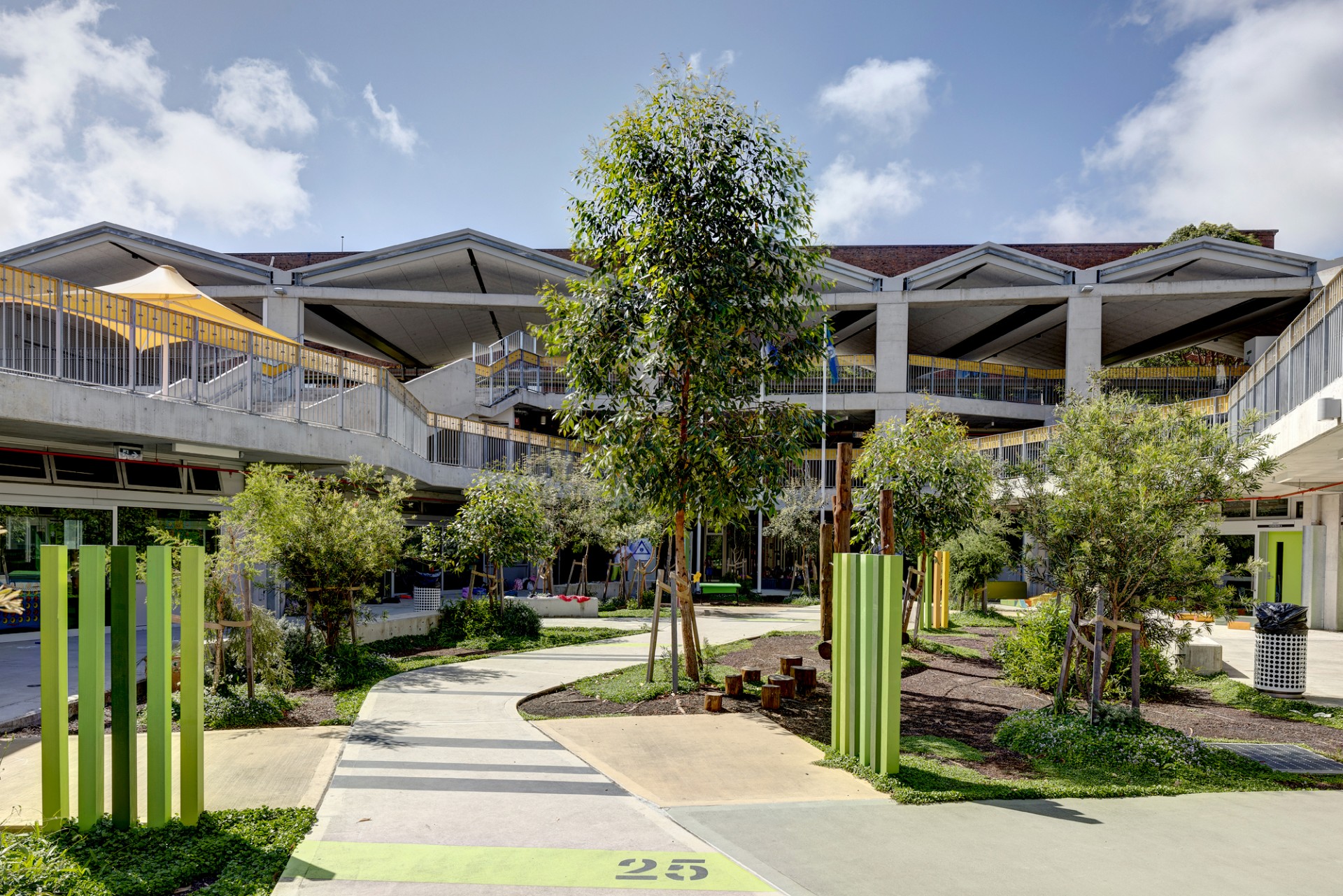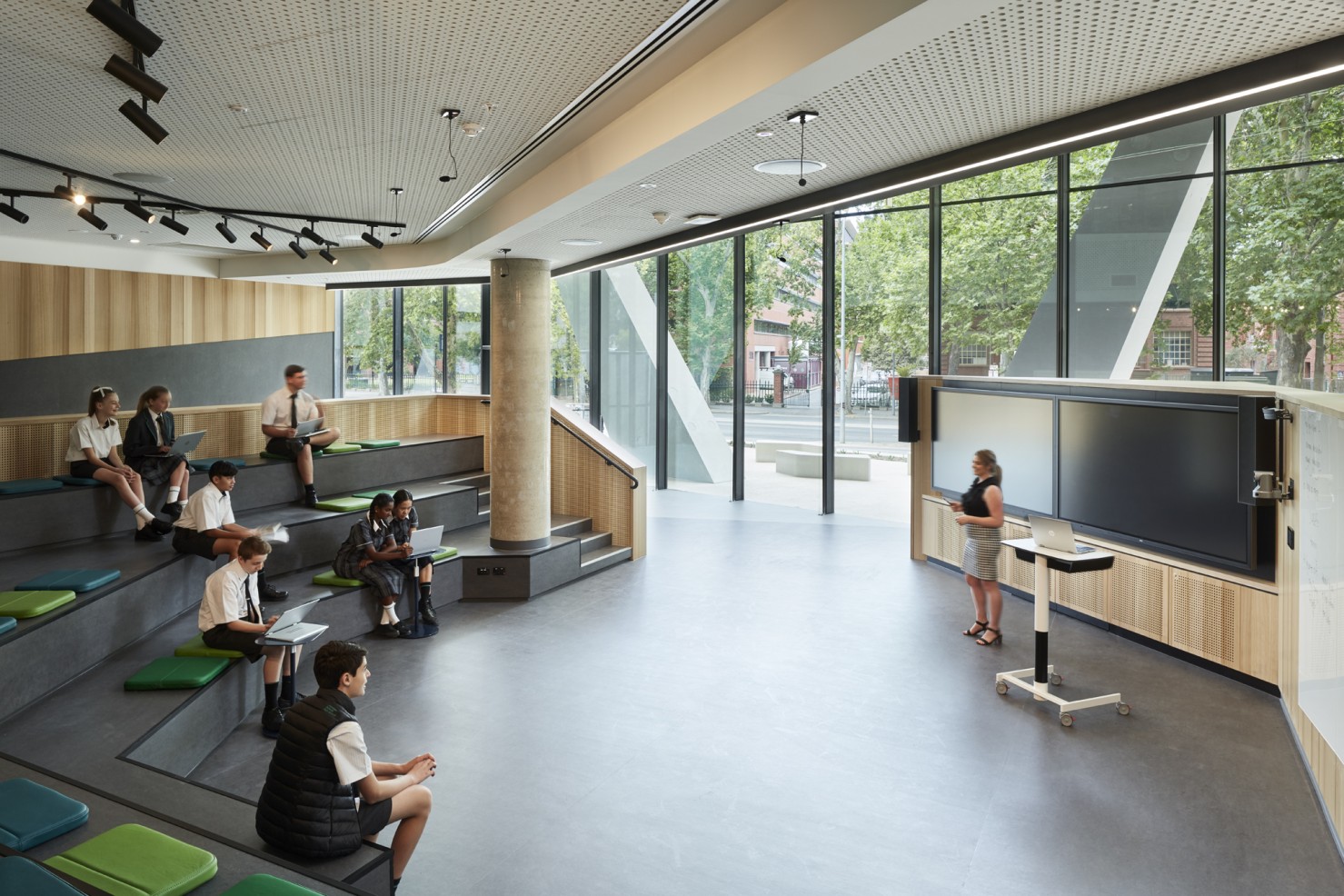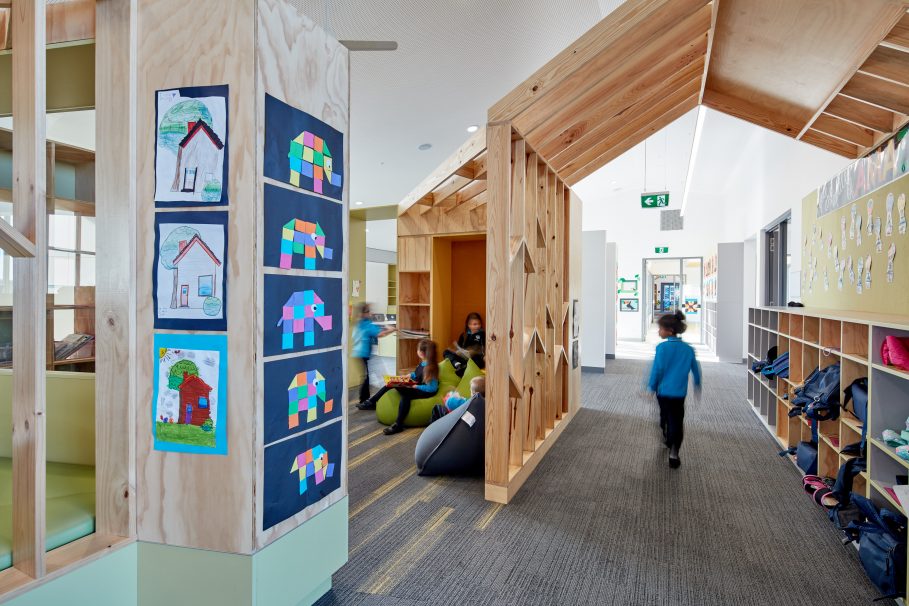
Celebrating 21 Years Together
Born from three Australian architecture and design practices coming together in 2000, DesignInc is a powerful union of design talent, professional expertise, and multidisciplinary skills.
The DesignInc Sydney, Adelaide and Melbourne studios are setting new benchmarks in education typologies.

Designing learning environments for pre-schoolers and primary and secondary students is not without its challenges. Today’s next generation learners have grown up with technology and using a smartphone is second nature to them. So while designers and architects have to ensure these students are digitally connected at school, they also have to provide them with settings that encourage physical and social interaction. It requires design thinking that’s as nimble as it is rigorous and strategic.
For our Sydney, Adelaide and Melbourne studios, sharing ideas allows us to bring the best possible skills and expertise to the table. We’re setting new benchmarks in education typologies and delivering compelling design models in which the learning is far more active. Little wonder our portfolio is growing and the outcomes are setting new benchmarks, with each one a compelling response to prevailing pedagogies that advocate a student-centred model in which the learning is far more active.
As Sydney’s Managing Director Sandeep Amin outlines, ‘our design approach is humanistic and responsive to the needs of the school’s diverse groups of end users, from toddlers to matriculating students, teachers and the broader community at large.’ At Lindfield Learning Village (designed in collaboration with Lacoste + Stevenson), the resulting scheme eschews traditional classrooms for an open plan conducive to different learning modalities. So ‘waterhole’ spaces support larger groups, the ‘campfire’ spaces cater for small groups and provide an area where students gather to learn from experts, and the ‘caves’ support autonomous work. It’s a layout that encourages discovery and play and very much facilitates connectivity between students of all ages.
This promotion of enquiry-based learning also underscores the design of the new Adelaide Botanic High School (in collaboration with Cox Architecture) on the eastern edge of the CBD. The state’s first vertical school likewise opened early this year and features flexible learning areas that enable an integrated curriculum, with a view to helping students transition more easily into tertiary education. Purpose-designed laboratories equipped with state-of-the-art science and design technology support the school’s STEM focus and the heart of the campus is a light-filled atrium that connects the adapted six-storey Reid Building to a new seven-storey building.

The Adelaide studio has imagined the internal spaces as domestic scaled places for gathering and collaboration. Stepped seating in the atrium is reiterated in the lecture theatres, bringing an informal sensibility to both arrangements that makes them all the more comfortable and inviting. While generous glazing lets in an abundance of sunlight and timber finishes add warmth as well as provide a visual connection to nature, along with the seating’s green upholstery. ‘It’s an extension of the home and a space that caters for students of all types,’ reflects Adelaide’s Senior Associate Jennifer Drake. ‘The most innovative educational spaces grow with changing pedagogies and are doing now what needs to be done in the future, without knowing what the future is.
It’s an extension of the home and a space that caters for students of all types; the most innovative educational spaces grow with changing pedagogies and are doing now what needs to be done in the future, without knowing what the future is.
Jennifer Drake
Senior Associate, DesignInc Adelaide
This question of what a school of the future will be and what it should do is something DesignInc as a practice is exploring and it’s a particular area of interest for the Melbourne studio, led by Director Christon Batey-Smith. The New Schools 2020 (in association with Architectus and K2LD) and New Schools 2021 (in association with Brand Architects) programs are underway to develop 16 schools in high growth areas of metropolitan and regional Victoria, all with an urban village approach.

Education is dynamic, as the boundaries of classroom, library, outdoor and social spaces are increasingly blurred. Education and learning spaces now relate more strongly to twenty-first century work practices.
Christon Batey-Smith
Director, DesignInc Melbourne
A feasibility study to expand Hadfield Early Years Centre is also on the drawing boards and a functional brief for Monash College One Campus in Melbourne’s Docklands has been recently completed.
Six key design principles were developed with College stakeholders to inform teaching and learning across the 10-storey building and the focus is very much on community and providing a positive transition for students to Monash University.
All three of our studios’ education output is prodigious and it has allowed us to be progressive in our thinking. It’s a necessary requirement, especially when dealing with shifting pedagogical frameworks that ultimately aim to improve the student experience.